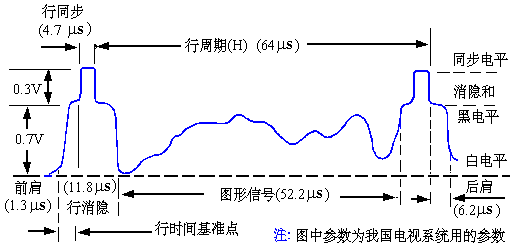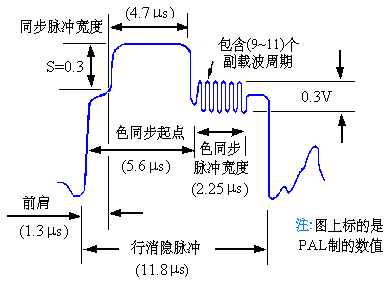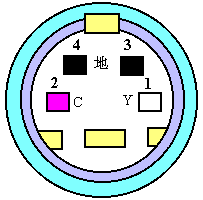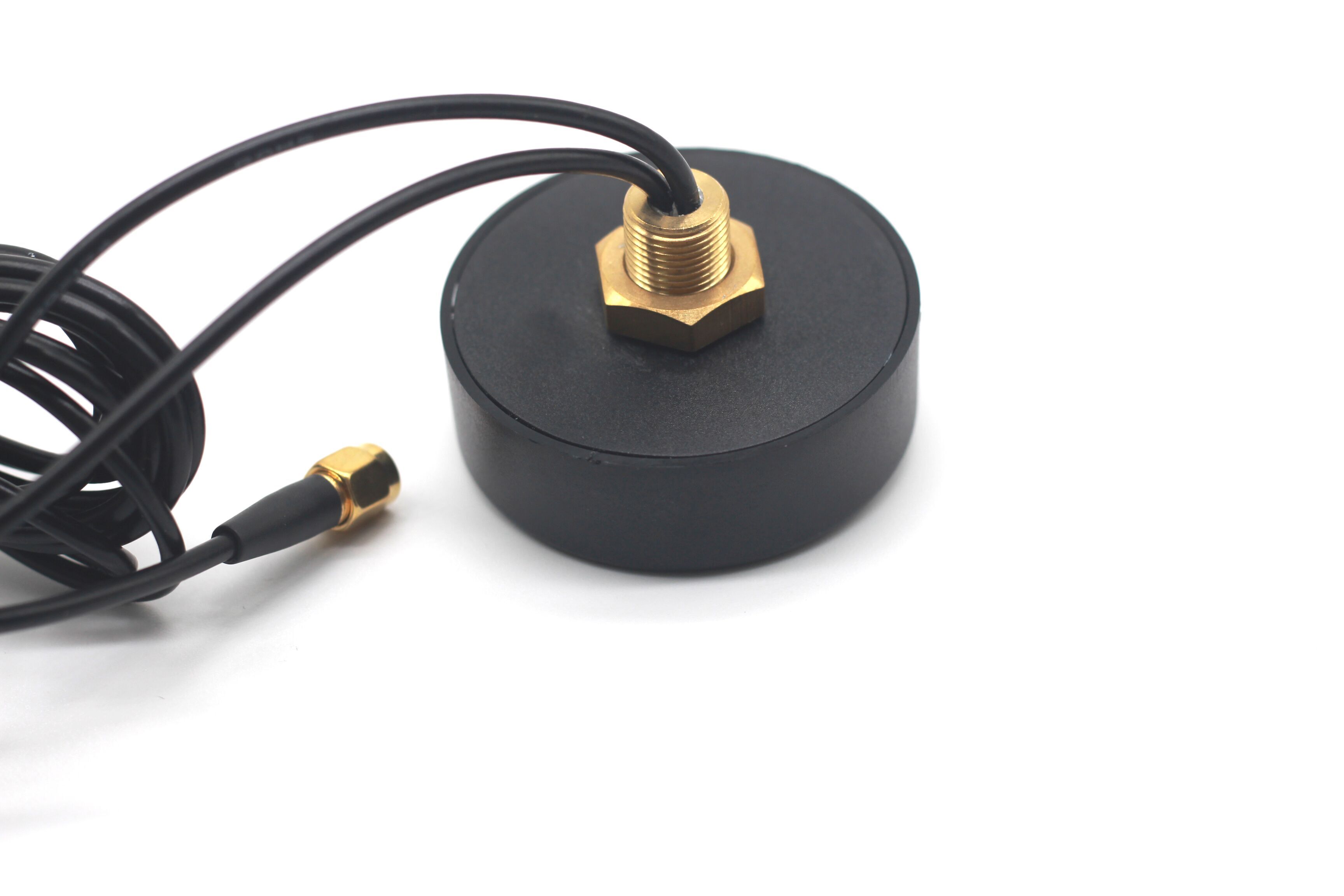Composite television signal
A single signal containing a luminance signal, a color difference signal, and all timing signals is called a composite video signal, or a full TV signal. Figure 07-03-6 shows a black and white full TV signal, and the color difference signal is obtained by mixing with the luminance signal after color subcarrier modulation, as shown in Figure 07-03-7.

Figure 07-03-6 A line cycle of black and white full TV signal

Figure 07-03-7 Horizontal blanking interval of color TV system
(3) Component TV signals
Component video signal (component video signal) refers to each primary color component as an independent television signal. Each primary color can be expressed either in RGB or in brightness-color difference, such as YIQ, YUV. Using component TV signals is the best way to express color, but it requires a relatively wide bandwidth and synchronization signal.
(4) S-Video signal
Separate TV signal S-Video (Separated video-VHS) is a TV signal with separated brightness and color difference, and is a compromise between component analog TV signal and composite analog TV signal. There are two advantages to using S-Video:
â‘ Reduce the cross interference between the luminance signal and the color difference signal.
â‘¡ It is not necessary to use a comb filter to separate the luminance signal and the color difference signal, which can increase the bandwidth of the luminance signal.
The composite TV signal is to combine the luminance signal and the color difference signal together, and use a signal cable to transmit. The S-Video signal uses two separate signal cables, one for the brightness signal and the other for the color difference signal. These two signals are called Y / C signals. S-Video uses a 4-pin connector, as shown in Figure 07-03-8. The specific specifications are shown in Table 07-03-3.

Figure 07-03-8 S-Video connector
Table 07-03-3 S-Video industry standard 4-pin connector specifications
Socket number | signal | Signal level | impedance |
1 | Ground (brightness) | - | - |
2 | Ground (chroma) | - | - |
3 | Brightness (including sync signal) | 1V | 75 ohms |
4 | Chroma | 0.3V | 75 ohms |
It should be noted that please do not confuse S-Video with S-VHS (Super Video Home System), S-VHS is a high-end home video system. S-Video is a hardware standard that defines signal cable connection sockets. S-VHS or SVHS is a signal standard for reinforced VHS TV video tapes. The resolution provided is higher than the resolution provided by VHS, and the noise signal is lower. . S-VHS supports separate luminance and chrominance signal input / output, eliminating the composite-separation process of luminance and color.
The Description of 3G Screw Mount Antenna
3G Screw Mount Antenna provides 5 dBi of gain and works on all 3G & 4G cellular frequency bands worldwide (all CDMA, GSM, WCDMA/UMTS and LTE carriers - except 2600-2700 MHz European LTE).Resists vandalism with no exposed coax cable. 3G Screw Mount Antenna Includes low-loss coax fed through center mounting post.
3G Screw Mount Antenna Designed for vending machines, meter housings, equipment sheds, or other locations requiring an inconspicuous low-profile external antenna. Can also be vehicle mounted for buses, vans, trucks or other mobile installations.
Integrated SMA male plug connector mates with SMA female jack on modems, routers, etc.

The Advantage of 3G Screw Mount Antenna
1. Rich experience, proven technique
2. Reasonable price
3. Wider frequency
4. OEM/ODM available
5. Professional service
6. ISO:9001 certified
7. One year guarantee
8. Fast delivery time
9. Independent R&D
10. Strong Capacity
3G Screw Mount Antenna
3G Screw Mount Antenna,3G Screw Mount Outdoor Antenna,Screw Mount Waterproof, Screw Mounting Indoor SMA
Shenzhen Yetnorson Technology Co., Ltd. , http://www.yetnorson.com